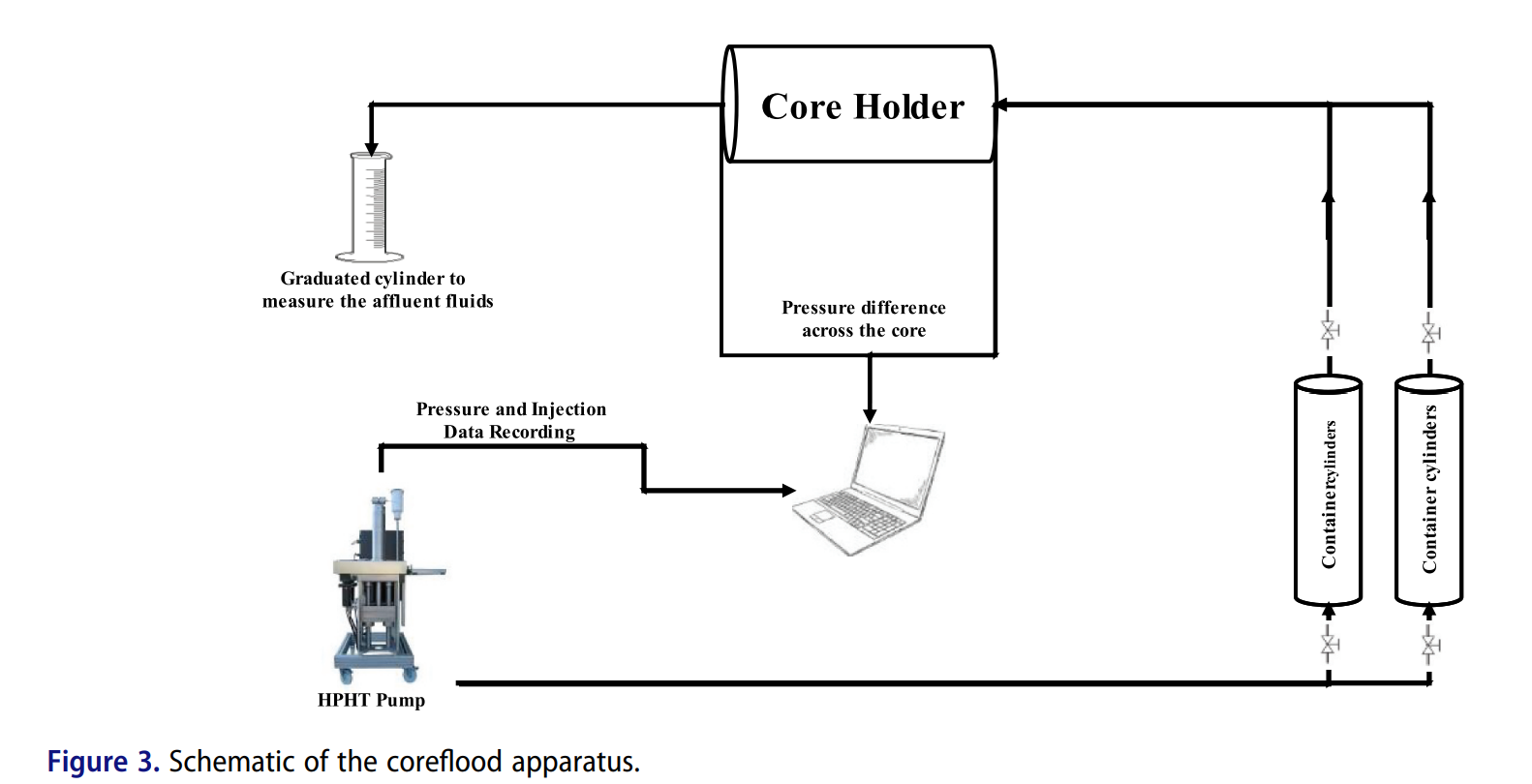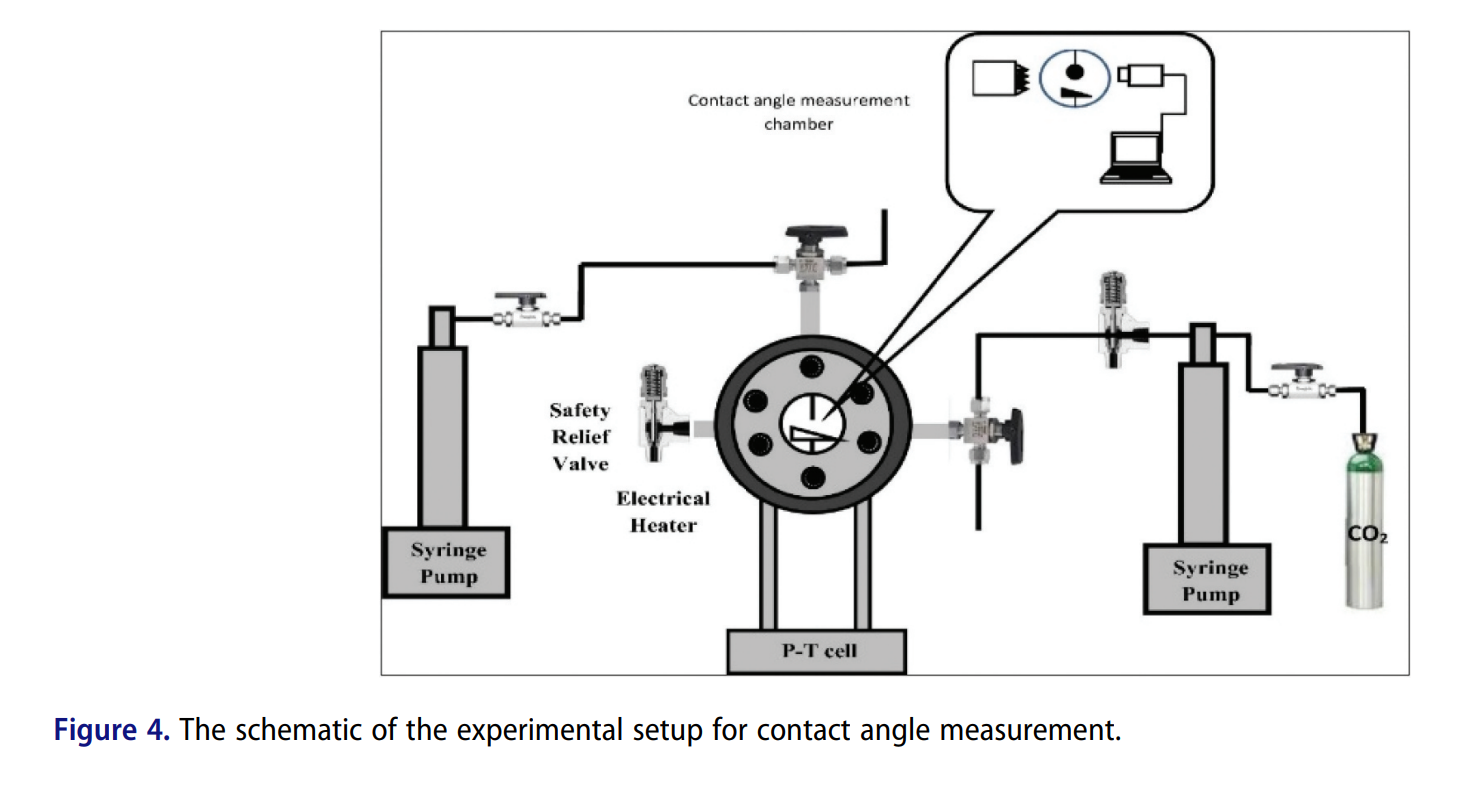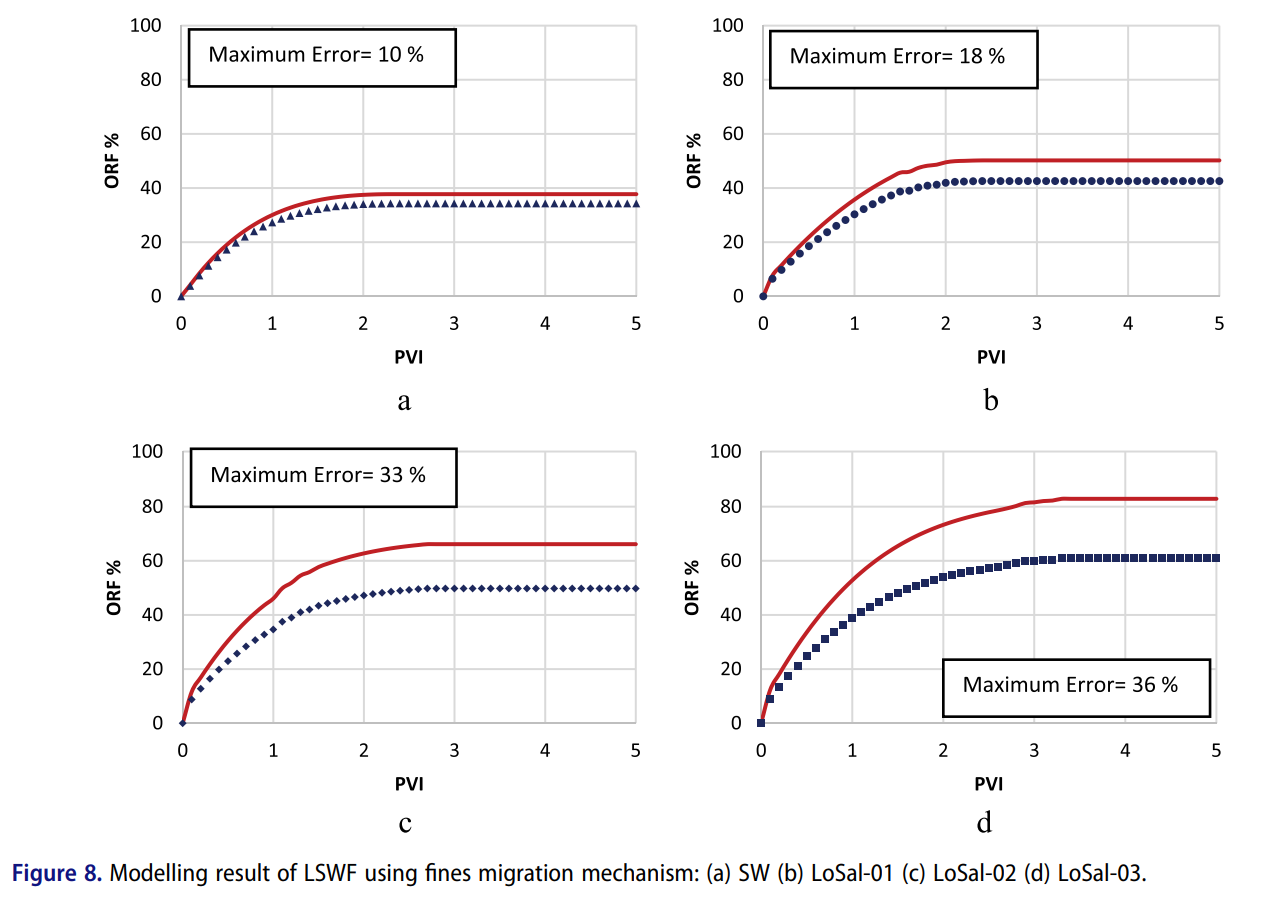Assessing the impact of geochemical mechanism and interpolation factorselection on the precision of low-salinity waterflooding modelling: a comparative study
低矿化度水驱(LSWF)作为一种提高碳酸盐岩储层采收率(EOR)的方法已经得到了广泛的证实;然而,其在此类储层中的地质化学模拟仍需进一步探索。本研究旨在通过对三种公认的地质化学机制进行比较分析来填补这一空白,这些机制包括微粒迁移、岩石溶解/沉淀和多离子交换(MIE)。
研究包括实验和模拟两部分:首先,我们进行了四组岩心驱替实验,以研究LSWF对岩心尺度上原油采收率以及岩石润湿性的影响,通过测量原油-盐水-岩石系统的接触角来评估。接下来,我们使用CMG-GEM软件创建了一维组分模型来模拟LSWF,并利用实验结果进行验证,逐一比较了三种地质化学机制的准确性。实验部分的结果证实了LSWF对提高原油回收率的积极影响:使用海水(40,000 ppm)时为34.3%,使用LoSal-01(10,000 ppm)时为42.5%,使用LoSal-02(5,000 ppm)时为49.7%,使用LoSal-03(2,000 ppm)时为60.9%。实验还显示了通过减少接触角来改变润湿性。此外,模型结果揭示了选择MIE作为控制机制和硫酸盐浓度([SO4^2-])作为相关插值因子(IF)可以获得最准确的LSWF模型。在确定了最准确的机制后,我们通过在Kr-Sw图上显示油水相对渗透率曲线交点的移动来检测模型中的润湿性变化。
CMG软件应用情况:
本研究中使用了CMG-GEM软件进行地质化学模拟,通过Low-Salinity Waterflooding Wizard向导建立模型。GEM™是一个著名的组分储层模拟工具,用于模拟不同岩石类型中LSWF、WA、MIE和zeta电位影响。CMG的前处理工具Builder用于创建一维、水平均匀的立方体笛卡尔网格模型系统(50×1×1),并定义了孔隙度和渗透率。为了模拟水驱过程,在网格中设置了注入井和生产井,并建立了注入速度超过五个孔隙体积(PVI)的持续时间。研究考察了三种关键的LSWF机制,包括微粒运移、岩石溶解/沉淀和多离子交换,以确定最准确的模型。




ABSTRACT
The efficacy of low salinity waterflooding (LSWF) as an enhanced oil recovery (EOR) method in carbonate formations has been well established; however, its geochemical modelling in such reservoirs remains insufficiently explored. This study aims to bridge this gap by conducting a comparative analysis of three well-recognized geochemical mechanisms including fines migration, rock dissolution/precipitation, and multi-ion exchange (MIE). Our research encompasses two parts: experimental and modelling. First, we conducted four coreflooding experiments to study the effect of LSWF on oil recovery in core scale as well as on rock wettability by measuring the contact angle of the crude oil-brine-rock system. In the next step, we created a one-dimensional compositional model in CMG-GEMTM for LSWF, validated it using the obtained experimental results, and compared the accuracy of the three geochemical mechanisms one-by-one. The results of the experimental section, conffrm the positive effect of LSWF on oil recovery: 34.3% with seawater (40,000 ppm), 42.5% with LoSal-01 (10,000 ppm), 49.7% with LoSal-02 (5,000 ppm), and 60.9% with LoSal-03 (2,000 ppm). The experiments also show the wettability alteration through the reduction in the contact angle. Furthermore, the modelling results reveal that choosing MIE as the governing mechanism and sulphate concentration ([SO24 ]) as the relevant interpolation factor (IF) leads to the most accurate LSWF model. After identifying the most accurate mechanism, we detected the wettability alteration in the model by showing the movement of oil and water relative permeability curves intersection point on the Kr-Sw diagram toward the right side.
作者单位:
澳大利亚西部乔达卢普埃迪考恩大学工程学院石油工程系
